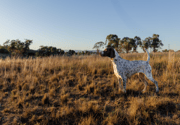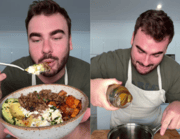
It was 2 am and Casey Daniel was staring at her laptop screen, her six-year-old son fighting for his life in a hospital bed nearby. Doctors had no answers.
Her little boy, who'd been MVP of his Little League team just weeks before, couldn't walk, talk or breathe on his own.
What happened next shows exactly why being your own health advocate—or that of a loved one—can literally mean the difference between life and death.
From baseball star to life support in 24 hours
Young Witten Daniel's nightmare began in April when he arrived at a Texas hospital with what seemed like simple dizziness and a headache.
Doctors initially blamed the flu. But within 24 hours, this active six-year-old had lost the ability to walk, talk or breathe independently before losing consciousness entirely.
As medical teams scrambled to run tests and keep Witten breathing with mechanical ventilation, they discovered something far more serious than influenza.
Instead, they found a rare—and potentially deadly—cluster of blood vessels leaking inside his brain stem.
The diagnosis was devastating. Doctors warned Casey that if her son survived, he'd likely never walk again and would need lifelong ventilator and feeding tube support.
What are cavernous malformations?
A cavernous malformation, also known as a cavernous hemangioma or 'cavernoma', is an abnormal vascular entity made up of many small compartments like a bunch of small berries, or a mulberry.
CCMs are present in approximately 0.2 per cent of the general population, and they account for a large proportion (8-15 per cent) of all brain and spinal vascular malformations.
About 25 per cent of people with cavernous malformations in the brain never have symptoms, but when they do cause problems, most people who have symptoms are between 20 and 50 years old.
Familial CCM accounts for at least 20 per cent of all cases. An inherited mutation of the CCM1, CCM2, or CCM3 gene causes familial cavernous malformation. The illness follows autosomal dominant inheritance.
A desperate mother's research changes everything
Faced with an impossible situation, Casey turned to the one resource available to her at 2 am—Google. Her determined research led her to an article by Dr Jacques Morcos, a neurosurgeon at UTHealth Houston who specialised in exactly her son's condition.
'I sent him a desperate email begging for help,' Casey recalled. The response came quickly—Dr Morcos insisted Witten be transferred to his facility immediately.
The transfer proved life-changing. At the new hospital, doctors confirmed Witten had a life-threatening cavernous malformation and rushed him into emergency surgery.
For four tense hours, Dr Morcos and paediatric neurosurgeon Dr Manish Shah performed the risky procedure.
'I want to say thank you to Dr Morcos and Dr Shah for letting me see my friends again'
The surgery was a success. Within hours, Witten was awake, breathing independently and talking again. Six weeks later, he celebrated his seventh birthday at home, and he's since been cleared to return to baseball.
The sobering reality of diagnostic errors
Witten's story highlights a concerning reality in healthcare. Some form of diagnostic error occurs in up to one in seven clinical encounters, and in Australia, an estimated 140,000 cases of diagnostic error occur each year, with 21,000 cases of serious harm and 2,000-4,000 deaths.
Almost one in two malpractice claims against general practitioners involves diagnostic error, yet more than 80 per cent of diagnostic errors are deemed preventable.
The numbers are particularly relevant for older Australians, who often manage multiple health conditions and may face more complex diagnostic challenges.
Cognitive factors in clinician decision making are the primary or contributing cause of more than 75 per cent of diagnostic errors. More than 80 per cent of these cases are preventable.
Your guide to effective health advocacy
Casey Daniel's midnight research mission offers valuable lessons for anyone navigating the healthcare system, particularly when facing complex or rare conditions.
Essential medical advocacy steps
- Document all symptoms, dates and treatments received
- Research your condition using reputable medical sources (government health websites, medical journals, established hospitals)
- Seek second opinions, especially for serious diagnoses or when treatment isn't working
- Prepare questions before appointments and bring a support person
- Keep copies of all medical records and test results
- Trust your instincts—you know your body best
- Don't be afraid to ask for referrals to specialists
When researching medical conditions online, start with trusted Australian sources like the Department of Health, Beyond Blue, or major hospital websites. International sources like the Mayo Clinic, Johns Hopkins, or medical journals can provide additional detailed information, but always discuss findings with your Australian healthcare providers.
Recognising when something's not right
If you notice symptoms such as seizure, severe headache, numbness, vomiting associated with headache, or physical weakness, go immediately to the emergency room or call 000.
For cavernous malformations specifically, cavernomas may present with seizures (60 per cent) or with progressive neurological impairment or 'deficits' (50 per cent).
While most of us won't face a medical mystery as rare as Witten's, his story reminds us that being an active participant in our healthcare can make all the difference.
Whether you're a parent, grandparent, or advocating for your own health, persistence and research can literally save lives.
The importance of specialist care
Witten's case also demonstrates how specialist expertise can be crucial for rare conditions. When performed by a highly experienced neurosurgeon, surgery to remove the cavernoma is an excellent option. The surgeon can completely remove the cavernoma with no damage to surrounding brain tissue. Relief from symptoms is usually immediate.
In Australia's healthcare system, don't hesitate to ask for referrals to specialists when dealing with complex conditions. While waiting times can be challenging, the expertise may be worth it—as Casey Daniel discovered when she found Dr Morcos.
Today, Witten is back in second grade and playing baseball again. His doctors' only condition for returning to sport? 'Send us pictures,' they told him. It's a reminder that even in the darkest medical moments, hope and expert care can lead to remarkable recoveries.
Did you know?
Did you know?
Individuals affected by CCM3 gene mutations are more likely to be diagnosed as children, haemorrhage at an early age, develop high numbers of lesions, and may also experience scoliosis, cognitive disability, benign brain tumours and/or skin lesions. However, genetic testing is only recommended for people with multiple cavernous malformations or a family history of the condition.
What This Means For You
Casey Daniel's story is a powerful reminder that sometimes the most important medical intervention happens not in an operating theatre, but at a kitchen table at 2am with a laptop and a determined advocate who refuses to give up.
Have you ever had to advocate strongly for yourself or a loved one in the healthcare system? Share your experiences with medical advocacy in the comments below—your story might help another reader navigate their own health challenges.
Original Article
https://www.news.com.au/lifestyle/r...b85c18637576c7914091bb0c7f3b60?from=rss-basic
Cerebral Cavernous Malformations | National Institute of Neurological Disorders and Stroke
Cited text: Cerebral cavernous malformations (CCMs)—also known as cavernomas and cavernous angiomas—are abnormal clusters of closely packed, thin-walled blood ves...
Excerpt: Doctors initially blamed the flu
https://www.ninds.nih.gov/health-information/disorders/cerebral-cavernous-malformations
Cavernoma Surgery | Best Cavernoma Surgeon | Cavernous Malformation Brain | C.N.S. Neurosurgery
Cited text: A cavernous malformation, also known as a cavernous hemangioma or ‘cavernoma’, is an abnormal vascular entity (or “lesion”) made up of many small comp...
Excerpt: A cavernous malformation, also known as a cavernous hemangioma or 'cavernoma', is an abnormal vascular entity made up of many small compartments like a bunch of small berries, or a mulberry
https://www.cnsneurosurgery.com.au/resources/cavernous-malformation-cavernoma/
Cavernous Malformation—Symptoms, Causes, Treatment | NORD
Cited text: CCMs are present in approximately 0.2 per cent of the general population, and they account for a large proportion (8-15 per cent) of all brain and spinal vascular mal...
Excerpt: CCMs are present in approximately 0.2 per cent of the general population, and they account for a large proportion (8-15 per cent) of all brain and spinal vascular malformations
https://rarediseases.org/rare-diseases/cavernous-malformation/
Cavernous Malformations | Johns Hopkins Medicine
Cited text: About 25 per cent of people with cavernous malformations in the brain never have symptoms.
Excerpt: About 25 per cent of people with cavernous malformations in the brain never have symptoms
https://www.hopkinsmedicine.org/health/conditions-and-diseases/cavernous-malformations
Cavernous Malformations | Johns Hopkins Medicine
Cited text: Although children sometimes have symptoms, most people who have symptoms are between 20 and 50 years old.
Excerpt: most people who have symptoms are between 20 and 50 years old
https://www.hopkinsmedicine.org/health/conditions-and-diseases/cavernous-malformations
Cavernous Malformation—Symptoms, Causes, Treatment | NORD
Cited text: Familial CCM accounts for at least 20 per cent of all cases. An inherited mutation of the CCM1, CCM2, or CCM3 gene causes familial cavernous malformation. The...
Excerpt: Familial CCM accounts for at least 20 per cent of all cases. An inherited mutation of the CCM1, CCM2, or CCM3 gene causes familial cavernous malformation.
https://rarediseases.org/rare-diseases/cavernous-malformation/
Diagnostic error occurs in one in seven clinical encounters | The Medical Journal of Australia
Cited text: SOME form of diagnostic error occurs in up to one in seven clinical encounters, and most are preventable, according to the authors of a Perspective pu...
Excerpt: Some form of diagnostic error occurs in up to one in seven clinical encounters, and in Australia, an estimated 140,000 cases of diagnostic error occur each year, with 21,000 cases of serious harm and 2,000-4,000 deaths
https://www.mja.com.au/journal/2020/diagnostic-error-occurs-one-seven-clinical-encounters
Diagnostic error occurs in one in seven clinical encounters | The Medical Journal of Australia
Cited text: Almost one in two malpractice claims against general practitioners involves diagnostic error.
Excerpt: Almost one in two malpractice claims against general practitioners involves diagnostic error
https://www.mja.com.au/journal/2020/diagnostic-error-occurs-one-seven-clinical-encounters
Diagnostic error occurs in one in seven clinical encounters | The Medical Journal of Australia
Cited text: “More than 80 per cent of diagnostic errors are deemed preventable,” they wrote.
Excerpt: more than 80 per cent of diagnostic errors are deemed preventable
https://www.mja.com.au/journal/2020/diagnostic-error-occurs-one-seven-clinical-encounters
One in seven medical diagnosis incorrect—News—The University of Queensland
Cited text: “Cognitive factors in clinician decision making are the primary or contributing cause of more than 75 per cent of diagnostic errors. “More than 80 per...
Excerpt: Cognitive factors in clinician decision making are the primary or contributing cause of more than 75 per cent of diagnostic errors.
https://news.uq.edu.au/2020-09-21-one-seven-medical-diagnosis-incorrect
Cavernous Malformations | Johns Hopkins Medicine
Cited text: If you notice symptoms, such as seizure, severe headache, numbness, vomiting associated with headache, or physical weakness, go immediately to the eme...
Excerpt: If you notice symptoms such as seizure, severe headache, numbness, vomiting associated with headache, or physical weakness, go immediately to the emergency room or call 000
https://www.hopkinsmedicine.org/health/conditions-and-diseases/cavernous-malformations
Cavernoma Surgery | Best Cavernoma Surgeon | Cavernous Malformation Brain | C.N.S. Neurosurgery
Cited text: Cavernomas may be asymptomatic, or may present with seizures (60 per cent) or with progressive neurological impairment or “deficits” (50 per cent).
Excerpt: cavernomas may present with seizures (60 per cent) or with progressive neurological impairment or 'deficits' (50 per cent)
https://www.cnsneurosurgery.com.au/resources/cavernous-malformation-cavernoma/
Brain Cavernoma | Associate Professor of Neurological Surgery
Cited text: When performed by a highly experienced neurosurgeon, surgery to remove the cavernoma is an excellent option. The surgeon can completely remove the cav...
Excerpt: When performed by a highly experienced neurosurgeon, surgery to remove the cavernoma is an excellent option.
https://www.drleonlai.com/brain-cavernoma
Cavernous Malformation—Symptoms, Causes, Treatment | NORD
Cited text: Individuals affected by CCM3 gene mutations are more likely to be diagnosed as children, hemorrhage at an early age, develop high numbers of lesions, ...
Excerpt: Individuals affected by CCM3 gene mutations are more likely to be diagnosed as children, haemorrhage at an early age, develop high numbers of lesions, and may also experience scoliosis, cognitive disability, benign brain tumours and/or…
https://rarediseases.org/rare-diseases/cavernous-malformation/







